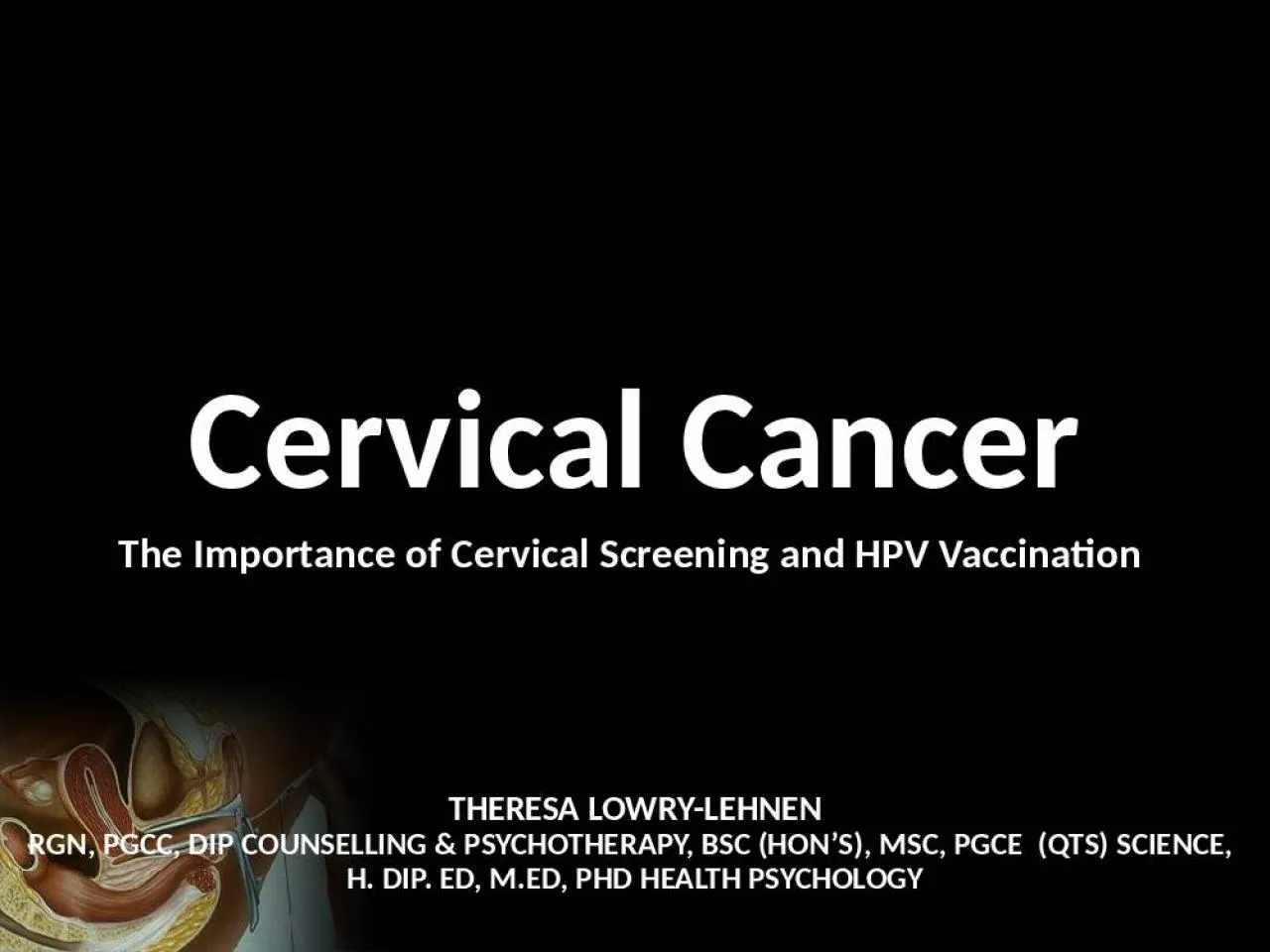PPT-Theresa Lowry-Lehnen RGN, PGCC, Dip Counselling & Psychotherapy, BSc (Hon’s), MSc,
Author : bitsy | Published Date : 2022-04-06
H Dip Ed MED PhD Health Psychology Cervical Cancer The Importance of Cervical Screening and HPV Vaccination Cancer Cells Changes to the DNA of a cell mutations
Presentation Embed Code
Download Presentation
Download Presentation The PPT/PDF document "Theresa Lowry-Lehnen RGN, PGCC, Dip Coun..." is the property of its rightful owner. Permission is granted to download and print the materials on this website for personal, non-commercial use only, and to display it on your personal computer provided you do not modify the materials and that you retain all copyright notices contained in the materials. By downloading content from our website, you accept the terms of this agreement.
Theresa Lowry-Lehnen RGN, PGCC, Dip Counselling & Psychotherapy, BSc (Hon’s), MSc,: Transcript
Download Rules Of Document
"Theresa Lowry-Lehnen RGN, PGCC, Dip Counselling & Psychotherapy, BSc (Hon’s), MSc,"The content belongs to its owner. You may download and print it for personal use, without modification, and keep all copyright notices. By downloading, you agree to these terms.
Related Documents














